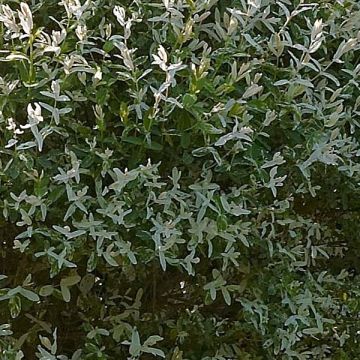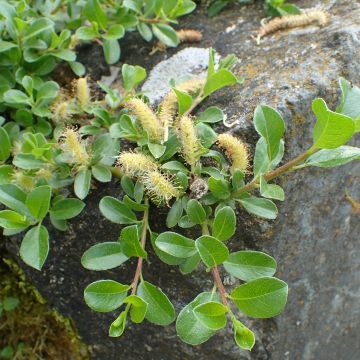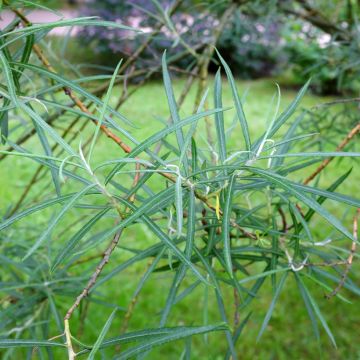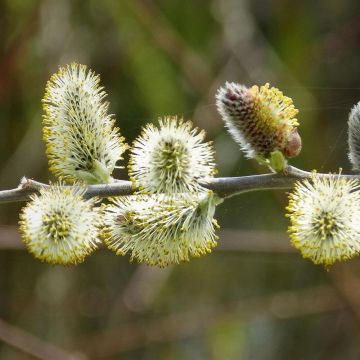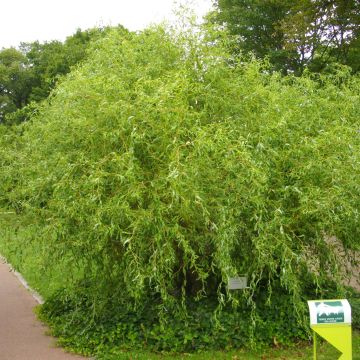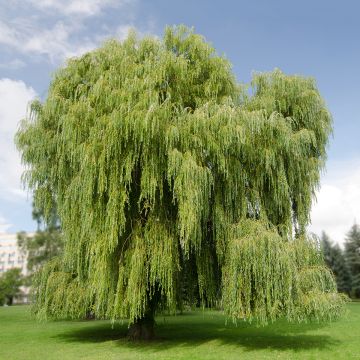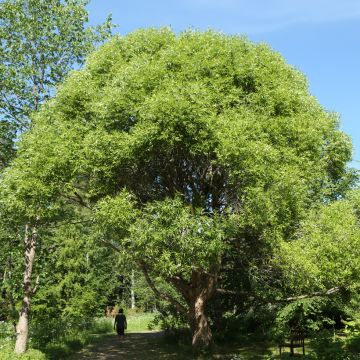

Salix x tetrapla - Willow


Salix x tetrapla - Willow
Salix x tetrapla - Willow
Salix x tetrapla
Willow
Special offer!
Receive a €20 voucher for any order over €90 (excluding delivery costs, credit notes, and plastic-free options)!
1- Add your favorite plants to your cart.
2- Once you have reached €90, confirm your order (you can even choose the delivery date!).
3- As soon as your order is shipped, you will receive an email containing your voucher code, valid for 3 months (90 days).
Your voucher is unique and can only be used once, for any order with a minimum value of €20, excluding delivery costs.
Can be combined with other current offers, non-divisible and non-refundable.
Why not try an alternative variety in stock?
View all →This plant carries a 24 months recovery warranty
More information
We guarantee the quality of our plants for a full growing cycle, and will replace at our expense any plant that fails to recover under normal climatic and planting conditions.
Would this plant suit my garden?
Set up your Plantfit profile →
Description
Salix x tetrapla is a hybrid willow with a small size that is perfect for small gardens, alpine rockeries, and terrace decoration. Naturally compact, and adorned with small green-gray leaves, it can be pruned to form a ball-shaped, very vibrant bush. It produces yellow catkins in spring and reveals its beautiful yellow to golden brown branches in winter. This bush thrives in the sun, in any well-drained soil, even limestone, but not too dry.
Salix x tetrapla belongs, like all willows, to the Salicaceae family. It is the result of cross-breeding between the Salix phylicifolia, the Arctic willow, which is very low and exceptionally hardy, and S.myrsinifolia, a species better known as the blackening willow. The tetrapla willow is a bush with a compact, dense, and bushy habit, with fairly slow growth. At maturity, it will reach approximately 1 m (3 ft) in all directions. The young branches are yellow, then turn grey-brown over time. Its foliage is deciduous, it falls in winter. It consists of small oval leaves arranged alternately on the branches, about 4-5 cm (2 in) long. The leaf surface is bright green on the upper side, while the underside is more glaucous, covered with grey fuzz. Flowering usually occurs from March to May, often before the appearance of leaves, sometimes simultaneously depending on the climate. Male and female subjects are separate individuals, as with all willows. In this hybrid, the small, oval, and dense catkins are about 1.5 cm (1in) long and greyish-yellow in colour.
This small willow is ideal for mountain gardens due to its excellent hardiness. It can be placed in a bed or rockery, as a low hedge, or even in a container on the terrace. Regularly prune it after flowering to encourage it to thicken and produce many colourful branches. For example, it can be combined with dogwoods (Cornus sanguinea, Cornus sericea), miscanthus, a Prunus cistena, a Prunus triloba Multiplex or a Japanese quince.
There is such a diversity of forms, sizes, and cultivation requirements among willows that it is impossible not to find a subject that will thrive in your garden. A willow always brings a rustic and natural touch, sometimes very unique depending on the variety.
Report an error about the product description
Salix x tetrapla - Willow in pictures




Plant habit
Flowering
Foliage
Botanical data
Salix
x tetrapla
Salicaceae
Willow
Cultivar or hybrid
Other Willow - Salix
View all →Planting and care
Plant Willow x tetrapla in spring or autumn, in a very sunny exposure. It requires a well-drained, rather moist soil and tolerates limestone well. Ideally, at planting, use a mixture composed of half clayey garden soil mixed with gravel. This willow does not appreciate hot and dry climates and dislikes heatwaves. On the other hand, it is perfectly resistant to cold, snow, and heavy frosts. Pruning is not essential, but you can prune it after flowering to encourage branching or to give it a nice shape.
Planting period
Intended location
Care
This item has not been reviewed yet - be the first to leave a review about it.
Haven't found what you were looking for?
Hardiness is the lowest winter temperature a plant can endure without suffering serious damage or even dying. However, hardiness is affected by location (a sheltered area, such as a patio), protection (winter cover) and soil type (hardiness is improved by well-drained soil).

Photo Sharing Terms & Conditions
In order to encourage gardeners to interact and share their experiences, Promesse de fleurs offers various media enabling content to be uploaded onto its Site - in particular via the ‘Photo sharing’ module.
The User agrees to refrain from:
- Posting any content that is illegal, prejudicial, insulting, racist, inciteful to hatred, revisionist, contrary to public decency, that infringes on privacy or on the privacy rights of third parties, in particular the publicity rights of persons and goods, intellectual property rights, or the right to privacy.
- Submitting content on behalf of a third party;
- Impersonate the identity of a third party and/or publish any personal information about a third party;
In general, the User undertakes to refrain from any unethical behaviour.
All Content (in particular text, comments, files, images, photos, videos, creative works, etc.), which may be subject to property or intellectual property rights, image or other private rights, shall remain the property of the User, subject to the limited rights granted by the terms of the licence granted by Promesse de fleurs as stated below. Users are at liberty to publish or not to publish such Content on the Site, notably via the ‘Photo Sharing’ facility, and accept that this Content shall be made public and freely accessible, notably on the Internet.
Users further acknowledge, undertake to have ,and guarantee that they hold all necessary rights and permissions to publish such material on the Site, in particular with regard to the legislation in force pertaining to any privacy, property, intellectual property, image, or contractual rights, or rights of any other nature. By publishing such Content on the Site, Users acknowledge accepting full liability as publishers of the Content within the meaning of the law, and grant Promesse de fleurs, free of charge, an inclusive, worldwide licence for the said Content for the entire duration of its publication, including all reproduction, representation, up/downloading, displaying, performing, transmission, and storage rights.
Users also grant permission for their name to be linked to the Content and accept that this link may not always be made available.
By engaging in posting material, Users consent to their Content becoming automatically accessible on the Internet, in particular on other sites and/or blogs and/or web pages of the Promesse de fleurs site, including in particular social pages and the Promesse de fleurs catalogue.
Users may secure the removal of entrusted content free of charge by issuing a simple request via our contact form.
The flowering period indicated on our website applies to countries and regions located in USDA zone 8 (France, the United Kingdom, Ireland, the Netherlands, etc.)
It will vary according to where you live:
- In zones 9 to 10 (Italy, Spain, Greece, etc.), flowering will occur about 2 to 4 weeks earlier.
- In zones 6 to 7 (Germany, Poland, Slovenia, and lower mountainous regions), flowering will be delayed by 2 to 3 weeks.
- In zone 5 (Central Europe, Scandinavia), blooming will be delayed by 3 to 5 weeks.
In temperate climates, pruning of spring-flowering shrubs (forsythia, spireas, etc.) should be done just after flowering.
Pruning of summer-flowering shrubs (Indian Lilac, Perovskia, etc.) can be done in winter or spring.
In cold regions as well as with frost-sensitive plants, avoid pruning too early when severe frosts may still occur.
The planting period indicated on our website applies to countries and regions located in USDA zone 8 (France, United Kingdom, Ireland, Netherlands).
It will vary according to where you live:
- In Mediterranean zones (Marseille, Madrid, Milan, etc.), autumn and winter are the best planting periods.
- In continental zones (Strasbourg, Munich, Vienna, etc.), delay planting by 2 to 3 weeks in spring and bring it forward by 2 to 4 weeks in autumn.
- In mountainous regions (the Alps, Pyrenees, Carpathians, etc.), it is best to plant in late spring (May-June) or late summer (August-September).
The harvesting period indicated on our website applies to countries and regions in USDA zone 8 (France, England, Ireland, the Netherlands).
In colder areas (Scandinavia, Poland, Austria...) fruit and vegetable harvests are likely to be delayed by 3-4 weeks.
In warmer areas (Italy, Spain, Greece, etc.), harvesting will probably take place earlier, depending on weather conditions.
The sowing periods indicated on our website apply to countries and regions within USDA Zone 8 (France, UK, Ireland, Netherlands).
In colder areas (Scandinavia, Poland, Austria...), delay any outdoor sowing by 3-4 weeks, or sow under glass.
In warmer climes (Italy, Spain, Greece, etc.), bring outdoor sowing forward by a few weeks.






























